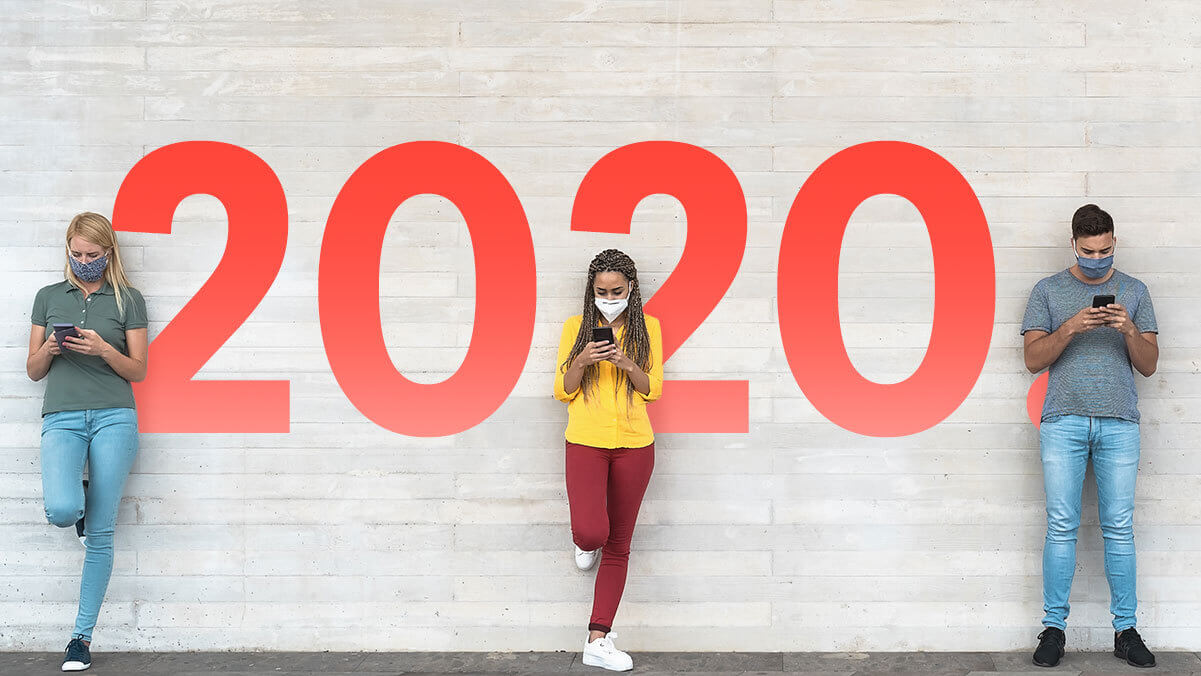In the dawn of a new digital era, everybody seems to be looking for fast success. That includes advertisers as well. It would be an overstatement to say inspiration and creativity are in short supplies in marketing, but it would not be as far-fetched as you’d think. Especially when it seems to be working out pretty good for some other industries.
One of the most uninspiring periods in film history is upon us. As of this moment, there are more than 150 sequels in the works in Hollywood. Yet, years 2015, 2016 and 2017 were the highest-grossing years in Hollywood history, largely owing their success to, you guessed it, sequels. So it doesn’t come as a surprise that brands want to replicate such success by copying famous movie franchises and release campaign after campaign. Hollywood and brand value success over originality, but what do consumers have to say about it?
You are walking out of the cinema, having just watched a movie you were very much looking forward to, you are high on fizzy drinks and on your way to a bar to dissect the plot, the actors and the gossip surrounding the production of the movie. But, you and your friends sense that, just like those who use “The Force” in the movie you’ve just watched, something is off… Your “spidey sense is tingling”, you “have a bad feeling about this” or you just might be “too old for shit”, but it all somehow seems familiar.
I have a bad feeling about sequels…
THE LAW OF DIMINISHING RETURNS
The thing is, there is probably nothing wrong with what you’ve just experienced. I say probably because going to the movies might not be your thing, but if you’re like most people, you do enjoy it. What you were experiencing is a case of diminishing returns.
Originating in economics, the law of diminishing returns states:
If one input in the production of a commodity is increased while all other inputs are held fixed, a point will eventually be reached at which additions of the input yield progressively smaller, or diminishing, increases in output. (Encyclopaedia Britannica)

This law is applicable in our everyday life as well. For example, you don’t get the same kick out of a piece of cake when you have it for the first time and when you have it for the 5th time. Especially if it’s the 5th piece in a row. The cake was great, the toppings might’ve even been varied and tasty, but since your stomach is getting full, your cravings are satisfied and the feeling just isn’t the same as when you ate the first piece. Also, the first hour of a video game marathon is much more fun than the seventh or 11th hour.
So, what was off about your theatre experience? The likeliest answer is that you have just seen a sequel. Maybe even the fifth sequel in a popular movie franchise. Even seventh or eighth ones aren’t as uncommon in recent years. Remember, this is something you wanted! You wanted to go to the movies with your friends and see this sequel, and still, you were disappointed. Even though you always loved this franchise, the chances of you coming back for another sequel are irreversibly diminished.
THE LOVE-HATE SPECTRUM
Now let’s take a look at the law of diminishing returns in marketing. Brands are on a perpetual quest to find loyal customers whom they would nurture and build relationships with. In the face of strong competition and customers’ decreasing loyalty, brands often turn to marketing as a solution. Agencies should rejoice, right? Not so fast.
In these situations, brands look to build the kind of customer loyalty that successful movie franchises managed to build with their audiences. So that when a new product or service (a sequel or a spin-off) is released, loyal customers want to try it out.
However, going to the movies is not the same as watching an advertisement, far from it. As much as people like going to the movies in general, they don’t like ads. I wouldn’t be far-off if I said that their feelings about ads gravitate towards hate on The Love-Hate Spectrum.

The love-hate spectrum (ClarkMorgan)
Source: People
Say what you want about the Fast & Furious franchise, but whether you’re a fan or not, these movies are successful AF and people obviously love them.
Real problems that brands have, as with people, often come from within. Issues with price, quality, customer service, management, distribution and so on. These are often listed under the Goals section of a marketing campaign brief and are usually preceded by an ungrateful Increase or Improve. However, these are not the issues that a marketing campaign can or should solve. In these situations, releasing campaign after a campaign can have an opposite effect on the consumer. Instead of improving or increasing, brands might find themselves in situations where they are doing the opposite, annoying and alienating their customers instead. Just like customers are starting to fall out of love with their favorite movie characters after eight sequels, they are likely to start liking the brands and their advertisements with every new campaign less and less.
THE JIMMY STORY
The problem with advertising campaigns nowadays is that they try to mimic the stories of successful movie franchises. How does that work? We’ll use Jimmy as an example in two stories.
1. DON’T GO CHASING SUBMARINES
Jimmy sees a new trailer promoting a sequel from his favorite movie franchise, let’s say Fast & Furious.
Jimmy buys tickets to see the movie.
Jimmy goes home and rewatches the previous seven installments from the franchise, because, like every moviegoer, he likes his movies in three trilogy sagas.
After consuming seven movies in one weekend, Jimmy feels good. The new ones aren’t bad, but the original trilogy still rules.
Jimmy sees the new movie and his feelings are mixed. Maybe the first two trilogies were enough.
…
Two years later, a new sequel comes out and Jimmy watches it on Netflix.
Jimmy loves going to the movies to catch up with his beloved characters and their car shenanigans. No matter how utterly, completely, inconceivably unrealistic they might be. No, really, have a look at the car vs. submarine chase scene (!) from Furious 8. Even though Jimmy might not feel the same amount of happiness and rush after the seventh sequel, like he did after the first one, he knew what to expect and went for it anyway. And when the next installment from the franchise comes out, Jimmy will watch it at home because he’s had enough. He wants to see how the series ends, but that’s it.
Possible is anything
2. JUST CHIP IT
Jimmy goes to the store to buy a bag of chips.
On his way, Jimmy sees a billboard promoting a new taste from Famous chip brand©.
Jimmy picks up a new taste from Famous chip brand©.
Jimmy comes home, tastes the chips and is actually quite fond of the new taste.
Jimmy turns on the TV and sees an ad for the same chips.
Jimmy turns off the TV and opens his laptop. As he surfs the internet, he sees banners promoting the new taste from Famous chip brand©.
As he opens his favorite chat app on his smartphone, Jimmy sees another ad for the new taste.
Jimmy’s fine with all the ads because he knows that the new taste needs to be promoted.
…
Several months later Jimmy sees new ads for the same taste. These ads are not that much different, in fact, Jimmy doesn’t understand why the new ads are released, everybody knows about the taste by now.
Jimmy starts seeing ads all over the town and in his home.
Jimmy sets fire to all of his electronic devices.
In this story, Jimmy saw the advertising, not because he chose to do so, but because they kept showing up. Even though they encouraged him to try the new taste when it came out, he doesn’t need to be reminded of the new taste every couple of months. And even if he was fine with the ads the first time around, now he’s sick of them.
THE MORAL OF THE STORY
We are exposed to “sequels” in almost all aspects of our lives. Once you’ve tried something for the first time, you have basically branded every following attempt at the activity as a sequel. Also, if you think about it, there isn’t much that hasn’t already been done in the history of mankind. Songs sound similar (there is even a website that helps you track down songs that sound similar), movies and paintings look similar and advertisements look and feel similar, as well as the products being advertised. To put it simply, sequels are easier. It is hard to create something new.
In a time when millennials slowly take control of the world, brand loyalty is hard to find. Options are endless in a way that we are unable to decide what brand of sneakers to wear, what movie to watch and what chips to snack on. We even came up with a name for it, and it sounds funny. It is in these times that brands look to build the same level of loyalty as movie franchises have managed to build. That is why brands copy the franchises’ storytelling formula and produce campaigns that build on the previous campaigns, acting as their sequels. This is not a bad idea at all. There is something about sequels that makes us come back for more. Familiar characters and surroundings, storytelling style, humor, drama, whatever it is, we want more. After all, that is the main reason we are living in the new golden age of television.
If they seek out to copy the movie franchise model in order to achieve better results, brands need to take into account 3 important factors:
1. TIME
It takes time to build loyalty. It took Fast & Furious franchise five movies to figure out their style and their audience before the franchise really took off. That’s five movies in a span of 10 years. That takes money and a lot of trial and error. A new campaign every couple of months cannot reach the same level of success for a brand. Creativity takes time as well, whether you are working on movie sequels or marketing campaigns. Even though movie sequels bring back the same characters, a new story is needed every time. That’s why it takes at least two to three years between sequels. Some brands take three to six months before releasing sequels to their successful marketing campaigns, expecting better results. It reminds me of the definition of insanity.
“Definition of insanity is doing the same thing over and over again and expecting different results.”
Success can’t be forced. If a campaign was successful, it doesn’t necessarily mean that the “sequel” will be as well. You need time to analyze and think your next steps through. Originality takes time, I can’t stress this enough.
2. BIG DATA
Successful film studios and companies such as Marvel and Netflix make their future franchise decisions based on data. To make a decision about making a 150+ million dollar movie without consulting viewership numbers and preferences would simply be bad business. These juggernauts build their franchises and business models for the long run and they use data to do so as precisely as possible. Companies have been using consumer data as a basis for their marketing efforts for decades now, but in order to survive and succeed, the data must be collected and analyzed for the long run. Products and services, as well as marketing campaigns, need to be planned far in advance.
3. PEOPLE
The most important and most overlooked factor is the people. People go to the movies because they want to. They need fun and relaxation in their free time and they choose to spend it at the cinema. People do not choose to watch ads and if you want to reach them, invest time and create something they will find useful and interesting.
In order to be as successful as the Fast & Furious franchise, brands need to be Patient & Analytical. By doing so they will free themselves to become more creative and develop products and campaigns that their customers will want to see and which they will enjoy. Those campaigns might even come close to LOVE on The Love-Hate Spectrum.


